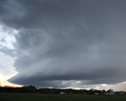Tampa roofing contractors could benefit from stimulus bill
According to the Tampa Bay Business Journal, the Tampa Housing Authority will receive more than $10.5 million through the American Recovery and Reinvestment Act of 2009. The funds will allow for upgrades and renovations, including roof and window repairs, painting and new heating systems.
"The construction industry has been particularly hard-hit in this downturn, so it's great that roofers, electricians, painters and carpenters will be needed and hired for this work," say U.S. Rep. Kathy Castor (D-Tampa). "It's also critical that this money is going to improve the lives of so many of our neighbors by improving their homes. This will help the housing authorities alleviate the existing backlogs of needed repairs and upgrades."
The housing authority of St. Petersburg, Fla., will receive $1.3 million in funding from the bill, and the housing authority of Bradenton, Fla., will receive $632,000.
USGBC updates LEED®
The U.S. Green Building Council's (USGBC's) Leadership in Energy and Environmental Design (LEED) Green Building Rating System™ has been revised for the first time since its inception in 2000. The changes went into effect April 27.
The revised LEED—known as LEED Version 3 (v3)—includes technical updates and revisions that prioritize energy use and carbon dioxide emission reductions; a new LEED building-certification process; and LEED Online v3, which features additional help options and streamlined credit submittals. LEED v3 incorporates all rating systems addressing commercial buildings, including new construction, commercial interiors, schools and existing buildings.
New projects can be registered under LEED Version 2 or LEED v3 during a 60-day overlap period ending June 26. Additionally, projects registered under the previous LEED system can transition to LEED v3 and LEED Online v3 without paying a new registration fee during a 180-day free migration period ending Oct. 24.
More information is available at www.usgbc.org.
Small businesses are optimistic
According to the Small Business Success Index,© an ongoing measurement of the overall health of U.S. small businesses conducted by Herndon, Va.-based Network Solutions® and College Park-based University of Maryland's Robert H. Smith School of Business, 69 percent of small businesses were profitable in 2008.
Based on a telephone survey of 1,000 small-business owners conducted during December 2008 and January 2009, the index states a majority of those who profited in 2008 said their success was equal to or better than that of the previous year. The index also indicates 70 percent of small-business owners expect their firms to be operating in five years as opposed to being closed, sold or transferred.
Additionally, almost half the small-business owners surveyed believe the economy will improve or at least remain unchanged in 2009. Small-business owners still are investing in their companies with 67 percent indicating they plan to spend the same amount or increase overall business spending.
"Small-business owners' optimism during the current economic downturn has a correlation to how competitive they are in being customer-oriented," says P.K. Kannan, director of the Center for Excellence in Service at the Robert H. Smith School of Business. "Those that are more engaged in understanding their customers' needs, creating relationships with customers, and increasing the value of their customer base through marketing activities and innovations are also those that are the most optimistic."
For more information or to take the survey, visit www.growsmartbusiness.com.
May is Hand Tool Safety Month
May is Hand Tool Safety Month, and the Hand Tools Institute (HTI) has posted numerous articles about hand tool safety on its Web site, www.hti.org.
In addition to the articles, HTI's Web site includes several excerpts from the fourth edition of its "Guide to Hand Tools: Selection, Safety Tips, Proper Use & Care." The Web site also includes information about selecting the right tool for a job; a list of hand tool manufacturers; and links to other Web sites focusing on hand tool industry market data, hand tool safety, ergonomics, standards, general hand tool interest and industry associations.
Details
MacDonald Sprague III
What is your position within your company?
I am owner and president of Mac Roofing Inc., Brockton, Mass.
What is the most unusual roofing project you've performed?
Recently, I was called around 4 a.m. concerning an emergency repair. An 18th century stone church in Boston converted to high-end condos had a fire in the penthouse unit. The roof was slate, and the fire burned under the slate for some time until the sheathing weakened and part of it collapsed. As soon as the fire was out, we accessed the roof through the hole and proceeded to strengthen the rafters, temporarily repair the sheathing and perform waterproofing work. We returned to remove all the temporary work and fully repair the area.
If you weren't a roofing contractor, what would you be?
I am not exactly sure what I would have been, but I would have strived to be an astronaut.
What is the most high-tech thing in your home?
My Sonos® music system
What three items are always in your fridge?
Water, super-sharp cheddar cheese and buffalo wings
If you could travel anywhere in the world, where would you go?
Nepal—to climb to base camp
Why did you become a roofing contractor?
There are five roofing companies in my family. This is what we do!
What are the most challenging aspects of your job?
Getting potential clients to focus more on quality than price
What was your first roofing experience?
Helping my father bend metal on a brake
Name one extravagance you allow yourself.
My yard—I work on it constantly. I love being outside, and I spend a lot of time on my brick patio, listening to great music on my all-season speakers by the out-door fireplace and grilling food. Every year, I have a new improvement slated to enhance the experience.
What is your favorite television show?
It's a tossup between "24" and "Modern Marvels."
If you could invite any three people to dinner (dead or alive) whom would you invite and why?
If I had to narrow it to three, my answer would be William Shakespeare, anyone who stormed a beach on D-Day and Teddy Roosevelt. I think I would learn a lot, and the conversation would be quite rousing.
What is your roofing industry involvement?
I am a member of the North/East Roofing Contractors Association, as well as NRCA. I've just been named an NRCA director.
People would be surprised to know …
I am not sure if they would be surprised, but I am environmentally aware and driven. I try to not take the planet for granted.
OSHA revises its field operations manual
The U.S. Department of Labor's Occupational Safety and Health Administration (OSHA) has revised its OSHA's Field Operations Manual.
OSHA's Field Operations Manual constitutes OSHA's general enforcement policy and procedures and is used by the agency's field offices to conduct inspections, issue citations and propose penalties.
"The manual will be a resource for workers and employers, giving them a consolidated reference on how OSHA expects workplaces to be safe and healthful," says Donald G. Shalhoub, OSHA's deputy assistant secretary of labor. "This document is part of OSHA's continuing commitment to make its standards and enforcement activities transparent and understandable to all parties."
The revised manual is available online at www.osha.gov/OshDoc/Directive_pdf/CPL_02-00-148.pdf.
In addition, OSHA has published Assigned Protection Factors (APF), a guidance document that provides employers with information for selecting respirators for workers exposed to contaminants in the air.
OSHA revised its existing Respiratory Protection standard in 2006 to add APFs and Maximum Use Concentration (MUC) provisions. APF is the workplace level of respiratory protection a respirator or class of respirators is able to provide to workers. The higher the APF number (5 to 10,000), the greater the level of protection provided to users. APFs are used to select the appropriate class of respirators that will provide the necessary level of protection against airborne contaminants.
MUC represents the limit at which the class of respirator is expected to provide protection. When a hazard's exposure level exceeds MUC, employers should select a respirator with a higher APF. MUC is the maximum atmospheric concentration of a hazardous substance from which a worker can be expected to be protected when wearing a respirator.
"Proper respirator selection prevents exposure to hazardous contaminants and is an important component of an effective respiratory protection program," Shalhoub says. "This guidance document serves as another useful resource for protecting the health and safety of workers at risk for respiratory illnesses."
Wisconsin uses recycled shingles
Wisconsin's Department of Transportation (DOT) has approved the use of recycled shingles in asphalt projects. Up to 5 percent of the total mixture can consist of recycled shingles.
The purpose of using recycled shingles is to preserve oil-based asphalt and avoid shortages similar to those that occurred during 2008 when fuel prices greatly increased.
Wisconsin's DOT expects its decision to be cost-effective.



